Banh mi Vietnam, or Vietnamese bread, is no longer a strange name on the global culinary map — especially for those seeking iconic street food. This food is a daily essential for many locals. Nowadays, it’s also adored by international food lovers, many of whom travel to Vietnam just to savor this delicacy. Why? Because it’s simple, fresh, balanced, and full of character. At Chapter Dining, we see banh mi Vietnam not only as a breakfast staple but also as a source of endless inspiration — a dish that perfectly reflects the soul of Vietnamese cuisine.
Table of Contents
Vietnamese bread has become more popular worldwide
Since 2022, banh mi Vietnam has been officially added to the Merriam-Webster dictionary, where it’s defined as:
“A usually spicy sandwich in Vietnamese cuisine consisting of a split baguette filled typically with meat (such as pork or chicken) and pickled vegetables (such as carrot and daikon) and garnished with cilantro and often cucumbers.”
This beloved dish has also been included in major dictionaries like Oxford and Cambridge.
But in Vietnam, banh mi goes far beyond a simple sandwich. It represents a living food culture passed down through generations, with countless variations created by local chefs across the country.
From banh mi cha ca (with fishcake), banh mi que (with pâté), to banh mi thap cam (with everything mixed in). Each version tells a different story. Every bite brings an explosion of flavors — sour, salty, spicy, and umami. All packed into a handheld masterpiece. That’s why this dish remains a daily go-to for Vietnamese people: fast, affordable, and irresistibly good.
In recent years, international diners have also recognized the popularity of banh mi in Vietnam. In 2023, CNN Travel ranked banh mi Vietnam among the “24 Best Sandwiches in the World”. In March 2024, Vietnamese bread topped Taste Atlas’s “Top 100 Sandwiches in the World” list as voted by international readers.
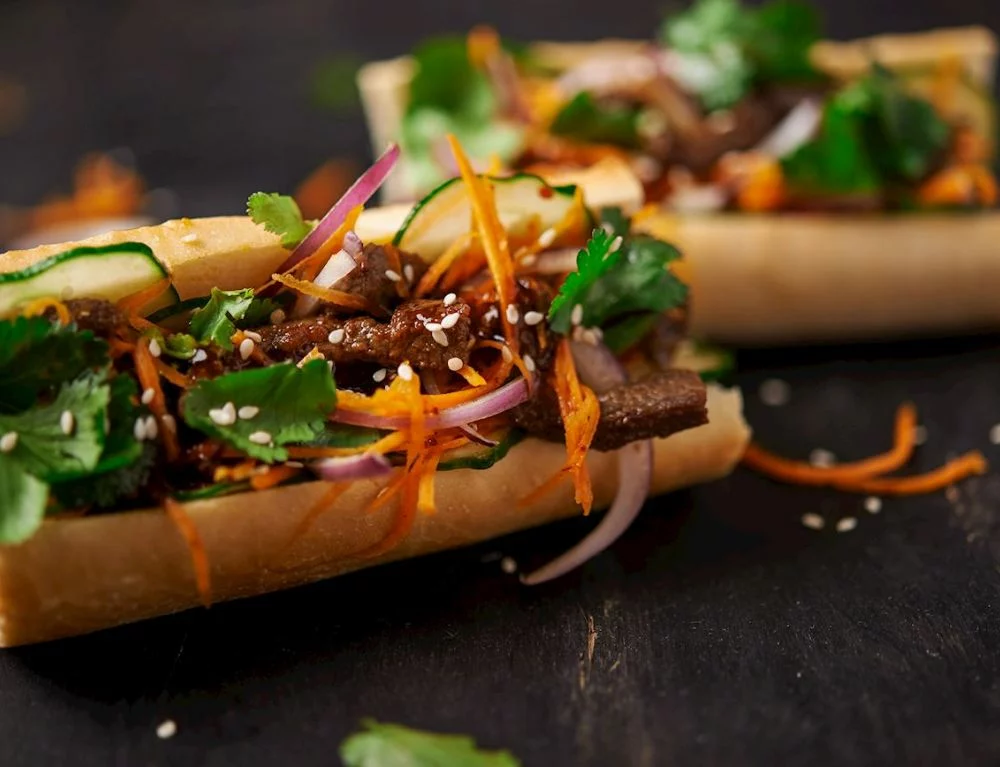
Origin story of banh mi in Vietnam
In fact, the story of banh mi Vietnam begins in the 19th century, when the French brought the baguette to Vietnam during the colonial period. The earliest loaves appeared in Saigon (now Ho Chi Minh City), sold from carts, bicycles, or wooden boxes. At first, locals ate the bread plain or with condensed milk, butter, or ham.
Everything changed in 1958, when the shop Banh Mi Hoa Ma opened in Saigon, introducing the first banh mi filled with cold cuts, pâté, pork roll, tomatoes, and other locally familiar ingredients.
Quickly, the sandwich evolved and spread across the country. The modern banh mi Vietnam is shorter, crispier, and softer than the original French baguette. It’s designed for fast prep, affordable pricing, and portion sizes that suit Vietnamese eaters. Today, you’ll find banh mi sold on every street corner across Vietnam.
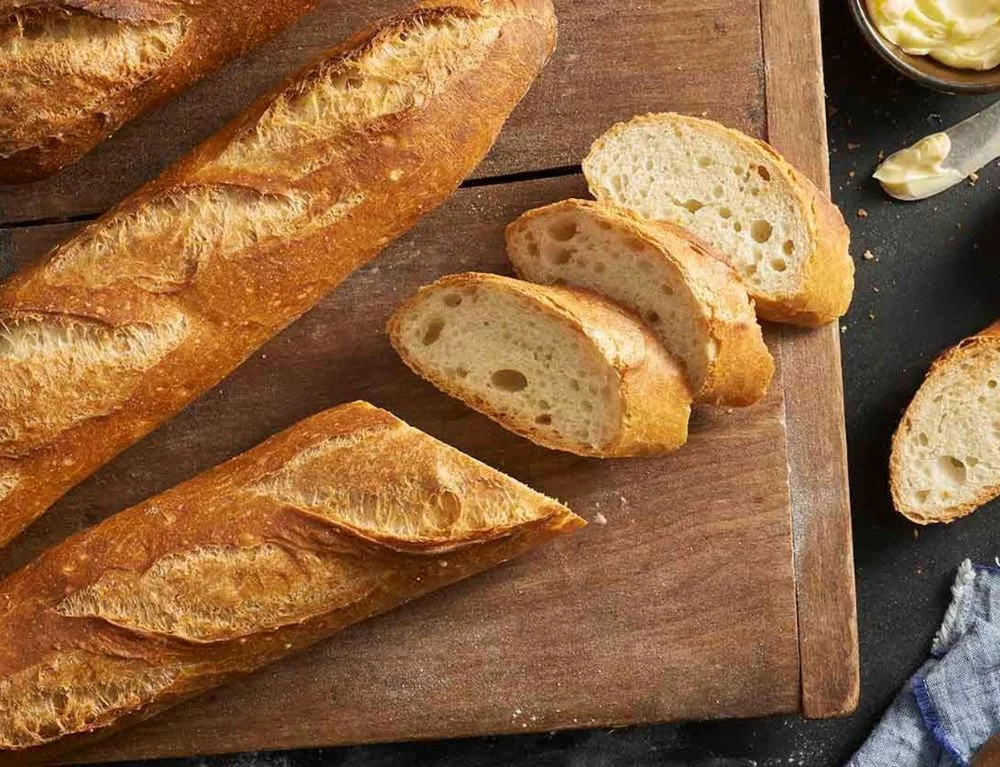
Regional variations of Vietnamese bread
Across the country, banh mi Vietnam takes on new forms that reflect the local culture and ingredients dựa trên từng region.
Banh mi Hanoi
Hanoi offers many versions of banh mi. The classic is minimalist but full of flavor, focusing on pâté, ham, and chili. It’s often eaten warm for breakfast with tea or coffee.
A standout version is banh mi chao (bread with combo pan), where the fillings are arranged in a sizzling pan: pâté, eggs, sausage, cucumbers, and tomatoes, served hot and bubbling. Diners tear the bread and dip it into the rich, savory sauce for a full-flavored experience.
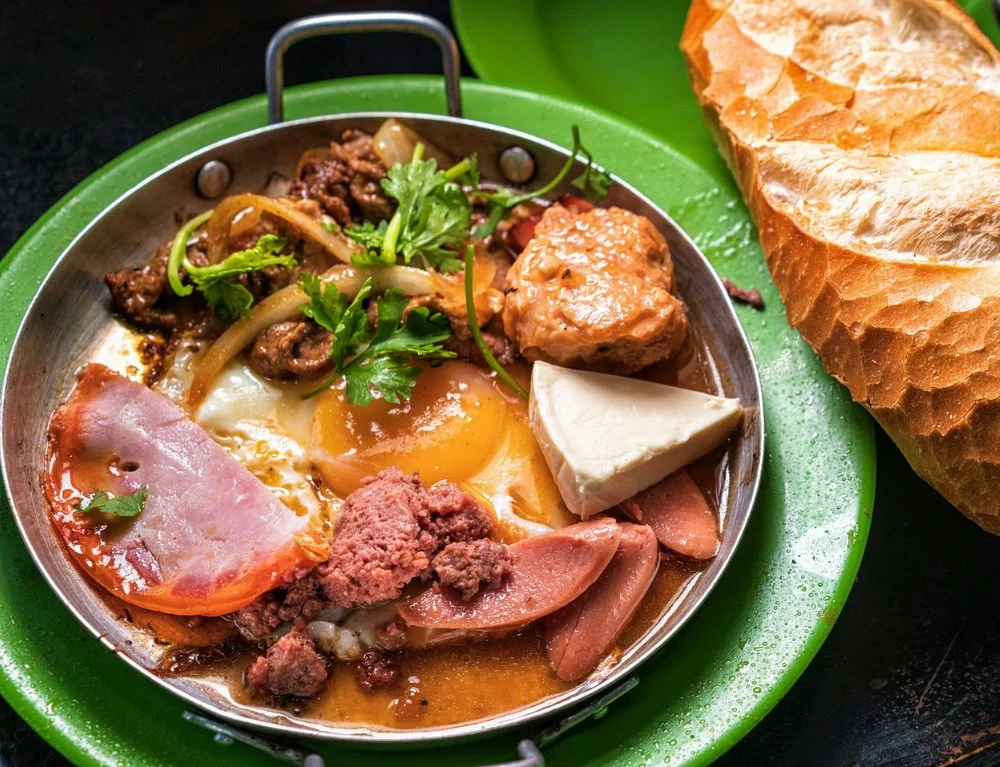
Banh mi cay Hai Phong
Hai Phong’s spicy stick bread is a popular local snack. It’s a slender banh mi, just about the width of two fingers, filled with a simple yet addictive combo of rich pâté and a special spicy chili sauce. It’s a must-try among Vietnamese breads.
Banh mi Hoi An
One of the most famous banh mi Vietnam styles loved by both locals and international tourists is from Hoi An. Celebrity chef Anthony Bourdain once praised it on his travels. Banh mi Hoi An has a pointed tip and is packed with perfectly layered fillings — Vietnamese pork sausage, char siu, sausage, pâté, cold cuts, and grilled meat — resulting in a unique flavor found only here.

Banh mi bot loc Hue
In Hue, instead of using sausages or eggs, locals fill their banh mi Vietnam with banh bot loc (rice dumplings with shrimp), then drizzle it with a sauce made of fish sauce, garlic, chili, and sugar. The result? A banh mi that’s salty, sweet, and spicy — just like the Hue locals love.
Banh mi xiu mai Da Lat
In Da Lat, the popular one is banh mi xiu mai, which is served with a bowl of meatballs made from finely ground pork, simmered in a fragrant bone broth. The bread is served separately — tear off a piece of hot, crispy bread, dunk it into the meatball soup, add a bit of chili satay, and enjoy with meatballs and pork sausage. This banh mi is comforting, hearty, and perfect for the cool Da Lat weather.
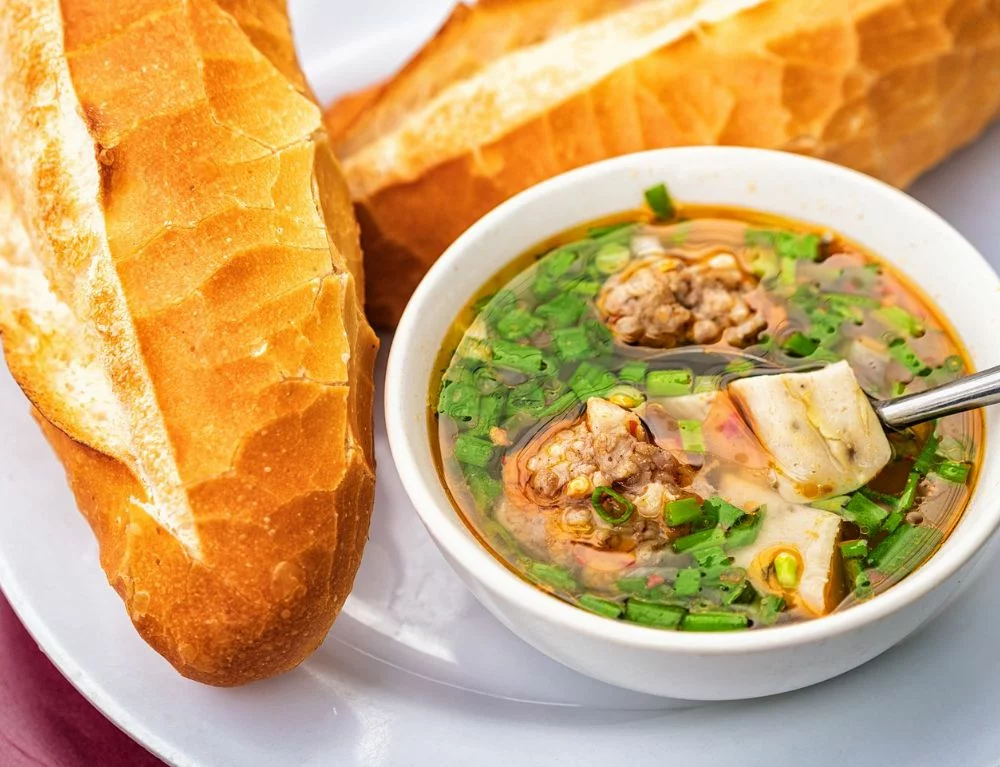
Banh mi Saigon
Saigon’s banh mi is known for its rich and varied fillings—from roast pork to pork floss, topped with bright pickles and spicy sauce. It’s a bold and hearty version that reflects the vibrant energy of southern Vietnam.
Beyond the classics like roast pork, omelet, char siu, and meatballs, Ho Chi Minh City also has a unique version called banh mi pha lau. The bread is served with a dipping sauce made from braised pork offal, flavored with coconut milk, five-spice powder, and rice wine. The preparation is elaborate, requiring careful cleaning of pork intestines and organs to remove any odor. The result is a deeply savory, aromatic baguette you won’t find elsewhere.
The transportation of banh mi Vietnam at Chapter Dining
What happens when a street icon enters a fine dining kitchen? At Chapter Dining, in every Chapter Menu, we reimagine this iconic street food, blending tradition with a touch of modern creativity.
Synonymous with the rhythm of daily life, this Vietnamese bread soothes hungry souls with its simplicity and authentic Vietnamese essence. The journey begins with meticulous preparation. Pickled mustard greens are soaked to achieve the right sourness, balanced with the rich, fragrant flavor of crispy roasted pork. In the final step, guests can choose to add our chef’s fermented chili sauce to achieve a subtle yet fiery depth.
The final creation features a compact and refined banh mi Vietnam, preserving the traditional flavors while offering a fresh, modern take as part of the Sunshine menu at Chapter Dining.
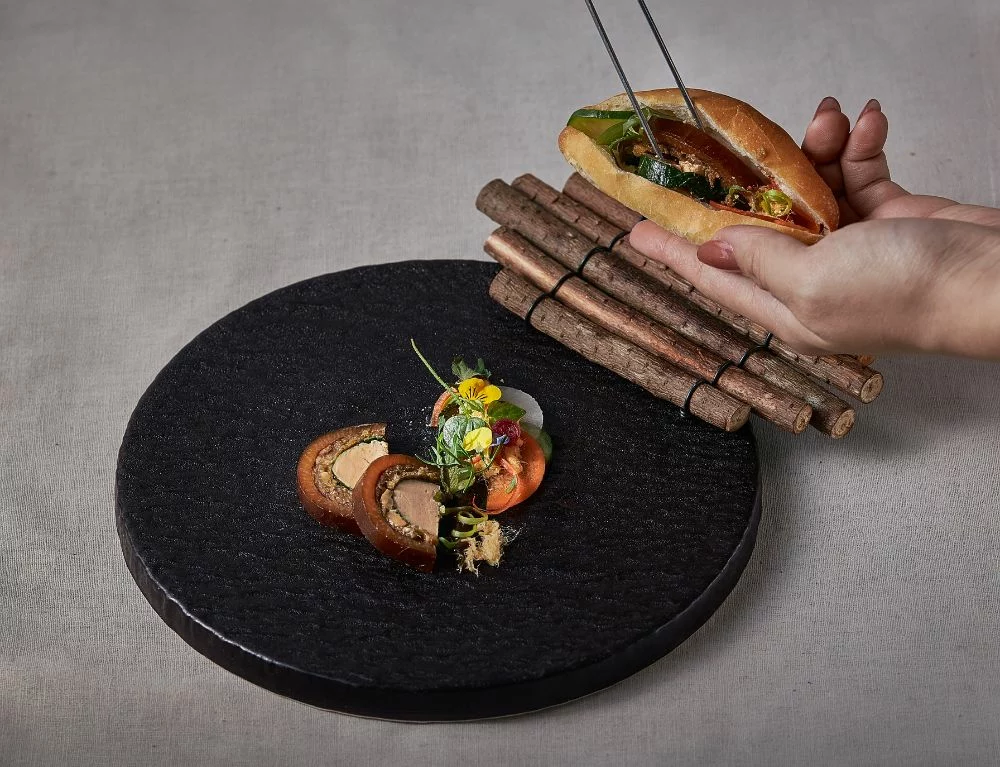
Banh mi Vietnam is a symbol of Vietnam’s culinary identity: rooted in tradition, open to change, and always delicious. Whether picked up from a bustling street corner or enjoyed at a fine dining table, it’s surely a meal that tells a story in every bite. For Vietnamese people, banh mi is not just food. It’s history, culture, and flavor, all between two halves of a bread.
_________
Chapter Dining
12C Chan Cam, Hoan Kiem, Hanoi
Mon – Sat from 18:00 – 23:00
Tel: +84 333 201 221 – Reserve a table
Email: reservation@chapter.vn



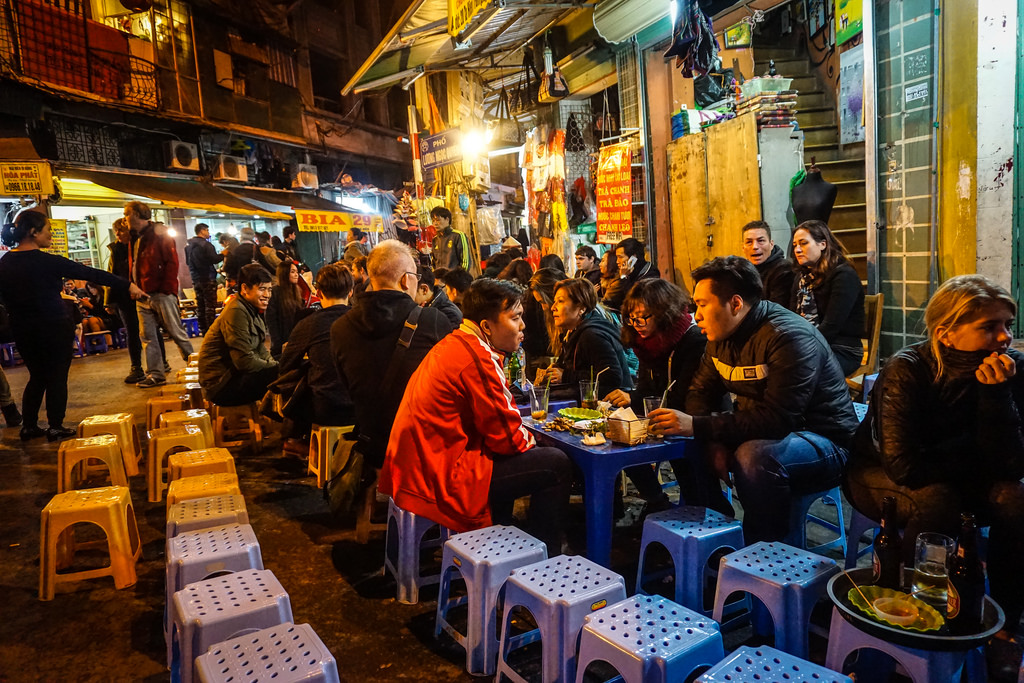

Sweet blog!